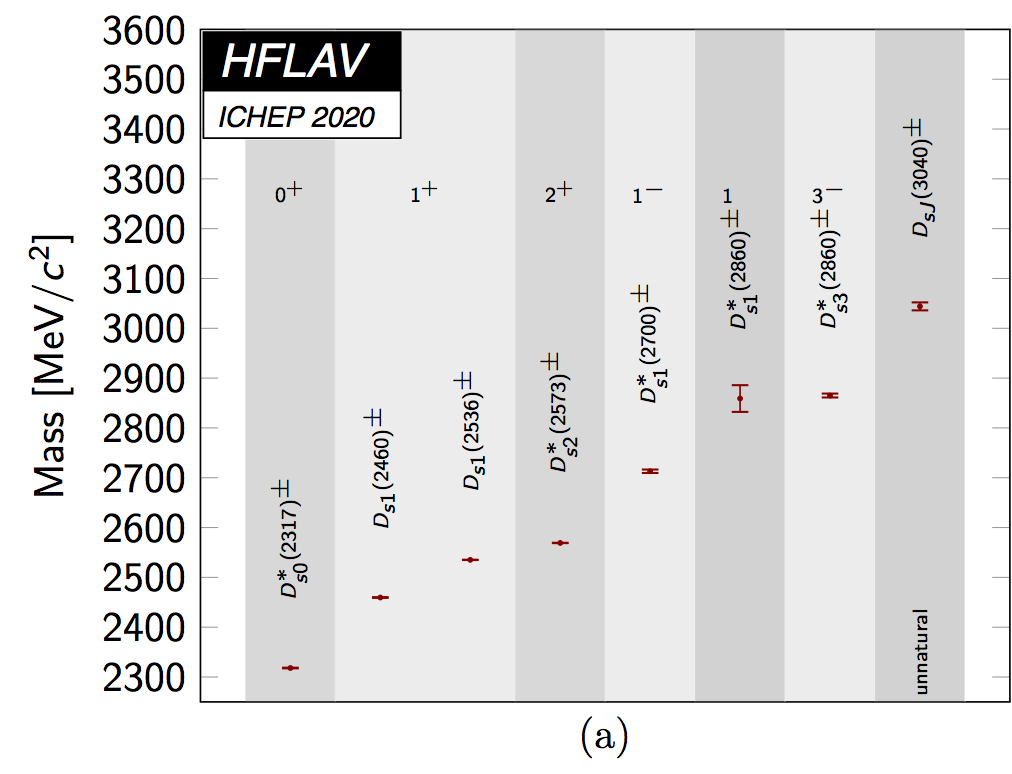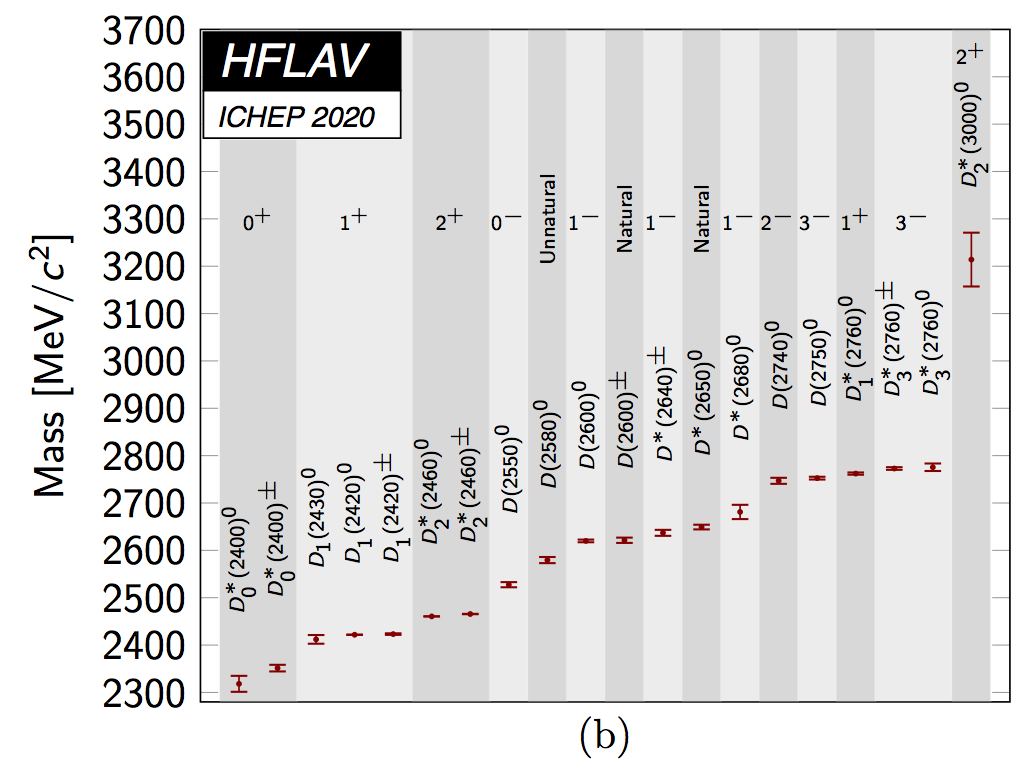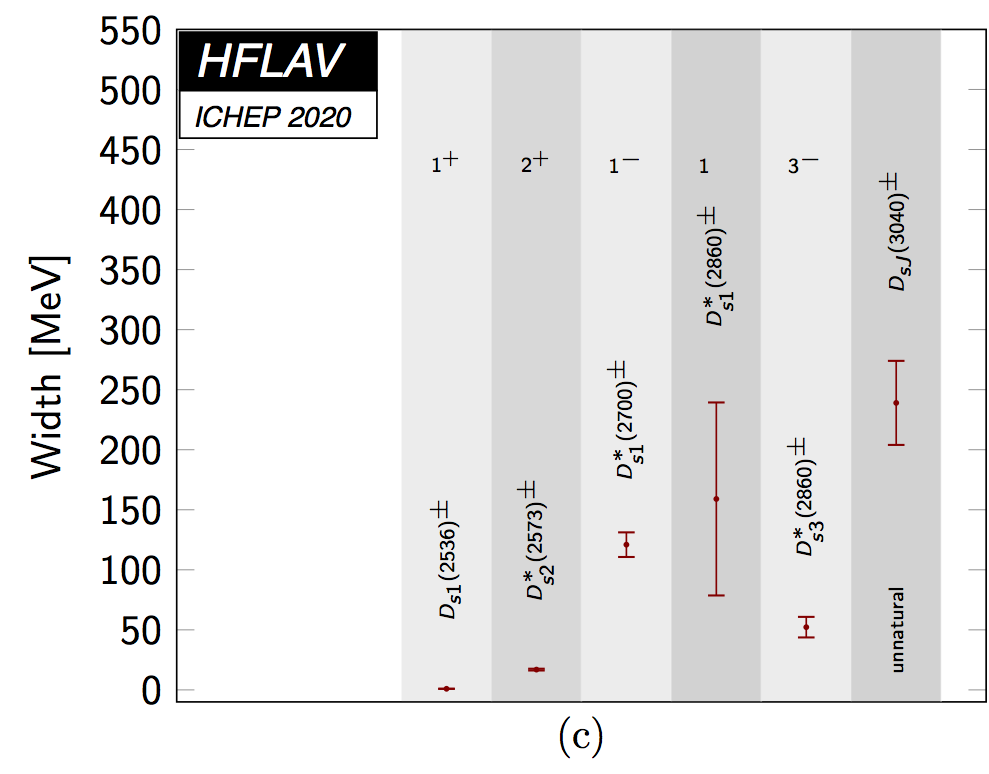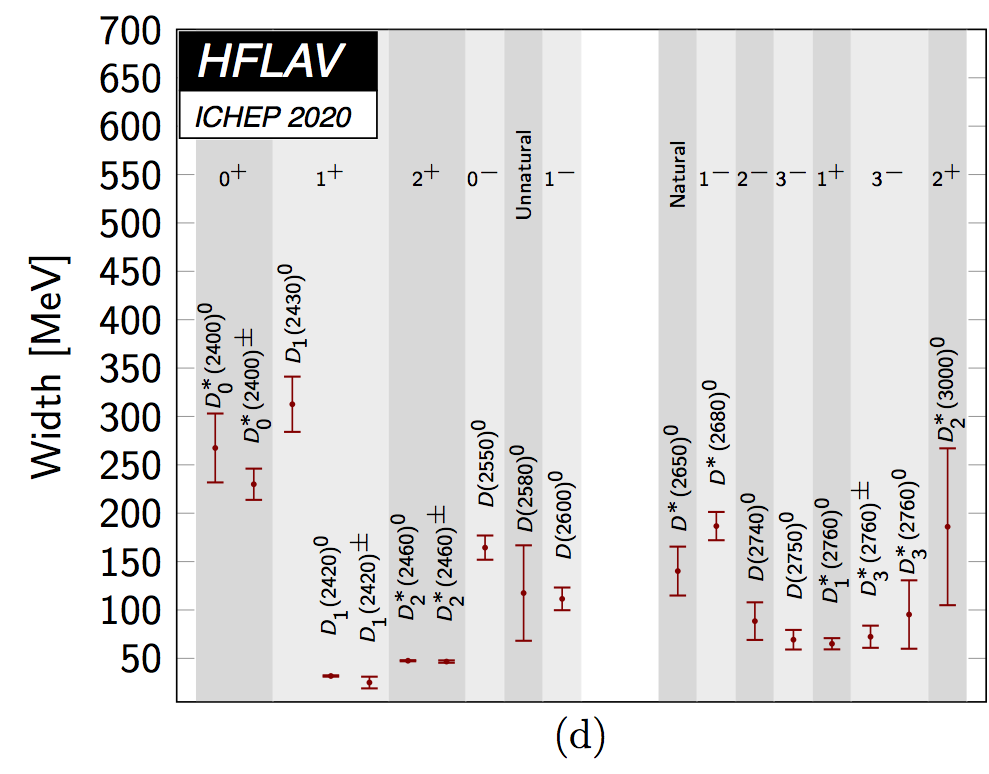World average values for excited
\(D_{(s)}\) mesons
(updated October 2020)
People working on this:
Tara Nanut
Mass and width averages
An average mass and width is calculated wherever possible.
The calculation of the averages assumes no correlation between
individual measurements. The masses and widths of narrow
(\(\Gamma<50\) MeV)
orbitally excited \(D\)
mesons, both neutral and charged, are well-established.
Measurements of broad states
(\(\Gamma\sim\) 200–400 MeV)
are less abundant, as identifying the signal is more challenging.
[Click on plots for high resolution .pdf files]




Tables of measured masses and widths, and our world averages, are here:
\(D_s\) mesons,
\(D\) mesons (1/2).
Branching fraction averages
Detailed tables of measurements of branching fractions for:
\(D_s\) mesons,
\(D\) mesons.
It is notable that the branching fractions for
\(B\) mesons decaying to a narrow
\(D^{\ast\ast}\) state and a pion
are similar for charged and neutral \(B\)
initial states, while the branching fractions to a broad
\(D^{\ast\ast}\) state and
\(\pi^+\) are much larger
for \(B^+\) than for
\(B^0\).
Mass differences
A summary of mass difference measurements is listed
here.
Helicity parameter
A summary of helicity parameter measurements is listed
here. In
\(D^{\ast\ast}\) meson
decays to \(D^{\ast\ast} \to D^{\ast}\pi\),
\(D^{\ast} \to D \pi\), the helicity
distribution is dependent on the helicity parameter, which is sensitive
to possible S-wave contributions in the decay.
This page is maintained by
Tara Nanut
and
A. Schwartz
and was last updated







